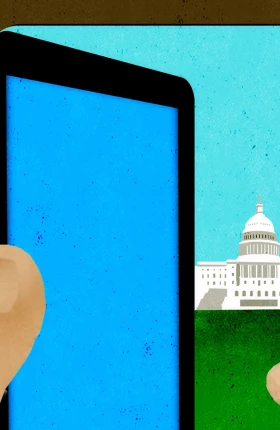Later this year, BCG will launch the Centre for Public Impact, a not-for-profit global foundation that will bring together world leaders to learn, exchange ideas, and share stories of government impact from around the world. The Centre is intended to help policy makers deliver better outcomes for citizens, such as through improved digital services.
Can you imagine a world without computers? In my case, a variety of digital devices are by my side from dawn to dusk, their presence as sacrosanct as my morning cup of coffee.
Governments, inevitably, have woken up to the new digital era—with mixed results. I am writing this from Canberra, Australia's capital. Many of my friends and neighbors work in government. Thanks to their collective efforts at both the state and federal levels, I can go online (sometimes on a mobile device) and submit tax returns and get health care rebates or immunization records for my children. Or renew vehicle registrations and make payments. The list goes on.
These are good examples of public impact: government helping citizens access its services quickly and efficiently. But one could argue that it's about time. After all, billions of people are now connected globally via e-mail, SMS, social and gaming networks. Physical boundaries are vanishing as more and more data is transmitted over the Internet. With our world transformed by a continually evolving digital ecosystem, governments can hardly opt out. But the scope to do more remains huge.
Room for Improvement
Australian policy makers are not alone in making bold commitments to providing digital services. But like many governments around the world that are seeking to go digital, they face a highly expectant target audience. Let's face it, many of us routinely shop online these days, or use the Web for banking and other financial services. The speed and ease of these transactions mean that we seek a similar experience when it comes to government. Unfortunately, that is not always forthcoming.
BCG's Digital Government: Turning the Rhetoric into Reality underlines the scale of the challenge. Our survey in 12 countries found that 95 percent of respondents had used at least one online government service in the last two years, with an average of 32 percent using online government services more than once a week. Overall, we found relatively high satisfaction levels, especially with basic interactions, but satisfaction was much lower among more digitally experienced younger users and those who wanted to engage in more sophisticated tasks and transactions. So what can governments do?
Breaking Bad Barriers
While there is certainly no shortage of ideas, it takes more than plans to make a difference. For starters, there must be a renewed focus on value. Policy makers should prioritize those services that are most important to constituents and with which satisfaction is low. It is time to boost investments in seamless end-to-end capabilities. Just downloading or filling in online forms in is no longer good enough. These days, citizens want easy-to-navigate and intuitive user interfaces, one-click or no-touch servicing, and easily accessible online support and service.
Admittedly, this won't be straightforward. Taking this kind of unified, coordinated approach to design and delivery can be challenging, particularly when problems straddle departmental dividing lines. Concerns over security, risk, legal issues, and compliance can also combine to slow things down. Nonetheless, governments need to persevere. The impact of basic improvements in the user experience, such as the ability to access all services with a single digital identity, regardless of department or agency, is huge.
Tomorrow...
The rapid emergence of mobile apps, cloud computing, social media, and big data—all unheard of not that long ago—is a vivid reminder that digital is a revolution that is far from complete. To their credit, governments have succeeded in bringing a large number of services online, but there is much still to do.
With ever-increasing numbers of online users and mobile devices around the world, policy makers must continue to meet this challenge head-on and not flinch from any barriers that may arise. The rewards in money saved, efficiencies achieved, and impact enhanced should fuel their journey in the years ahead.




